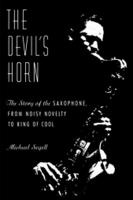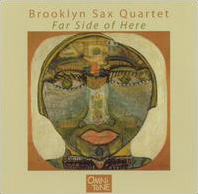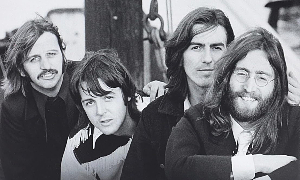Home » Jazz Articles » Book Review » The Devil's Horn: The Story of the Saxophone
The Devil's Horn: The Story of the Saxophone
 Michael Segell
Michael Segell The Devil's Horn: The Story of the Saxophone, From Noisy Novelty to King of Cool
Farrar, Straus and Giroux
336 pages
ISBN: 0374159386
2005
I recently saw Steven Spielberg's new movie, Munich. When the Israeli hero moves to Brooklyn, the sound of a saxophone inevitably appears, signaling The City and Sex. Saxophone's evocative nature is just one of its myriad aspects pursued by Michael Segell, in this case from the sublime (Berlioz) to the comical (Phil Woods). Segell leaves few if any stones unturned.
Surprisingly, the instrument's history ends up being among the most fascinating of Segell's topics, from corporate intrigues to eliminate Adolphe Sax's dominance of the market to the horn's role as a political hot potato throughout the last two centuries. How incredible that a musical instrument could engender so much opposition, from a list including Napoleans' successors, American movie censors, Czarist and Soviet regimes, the Vatican, imperial Japan and the Nazis (thus the title "The Devil's Horn."
Most of the saxophonists interviewed come from the jazz world. They include Joe Lovano, Charles McPherson, Lee Konitz, Branford Marsalis, Phil Woods, Michael Brecker, Dave Liebman, Marcus Strickland, Pharoah Sanders, Dewey Redman, Ron Blake, David "Fathead" Newman and Jimmy Heath. Just in time Segell was able to interview Illinois Jacquet and Steve Lacy, with the latter issuing some surprising and profound comments on his relationship to the soprano sax. I would have preferred more attention to R&B, but Segell provides some treatment of sax's role in that style as well as rock and classical.
Fortunately for the layman and the technically-challenged saxophonist (such as myself), Segell doesn't over-dwell on the horn's technical problems. Consider this entry, however. Beset by problems with tone, Illinois Jacquet consulted a mouthpiece expert. How was the problem solved? By adjusting the tip opening half a thousanth of an inch!
Throughout "The Devil's Horn" Segell gives us the added treat of following his own evolution from total novice to gigging sax man. Only when he follows the Purdue University Marching Band for ten pages does the ride bog down. While I'm on a negative note, Segell actually lists Ornette Coleman among tenor players. He also gets a bit trippy over the power of saxophone in people's lives, as in "the saxophone can lead straight to a world of trouble and pain and constant sorrow. Look what happened to Getz." Whoa, dude. It's not always about the sax. Getz was on the road at fifteen, not exactly normal. Drugs and alchohol were the vehicles of his catastrophes. The same things may well have happened had he taken up the vibes. Nevetheless, Segell's book is a thoughtful, passionate, fascinating journey, definitely worth the read.
Tags
PREVIOUS / NEXT
Support All About Jazz
 All About Jazz has been a pillar of jazz since 1995, championing it as an art form and, more importantly, supporting the musicians who make it. Our enduring commitment has made "AAJ" one of the most culturally important websites of its kind, read by hundreds of thousands of fans, musicians and industry figures every month.
All About Jazz has been a pillar of jazz since 1995, championing it as an art form and, more importantly, supporting the musicians who make it. Our enduring commitment has made "AAJ" one of the most culturally important websites of its kind, read by hundreds of thousands of fans, musicians and industry figures every month.




























